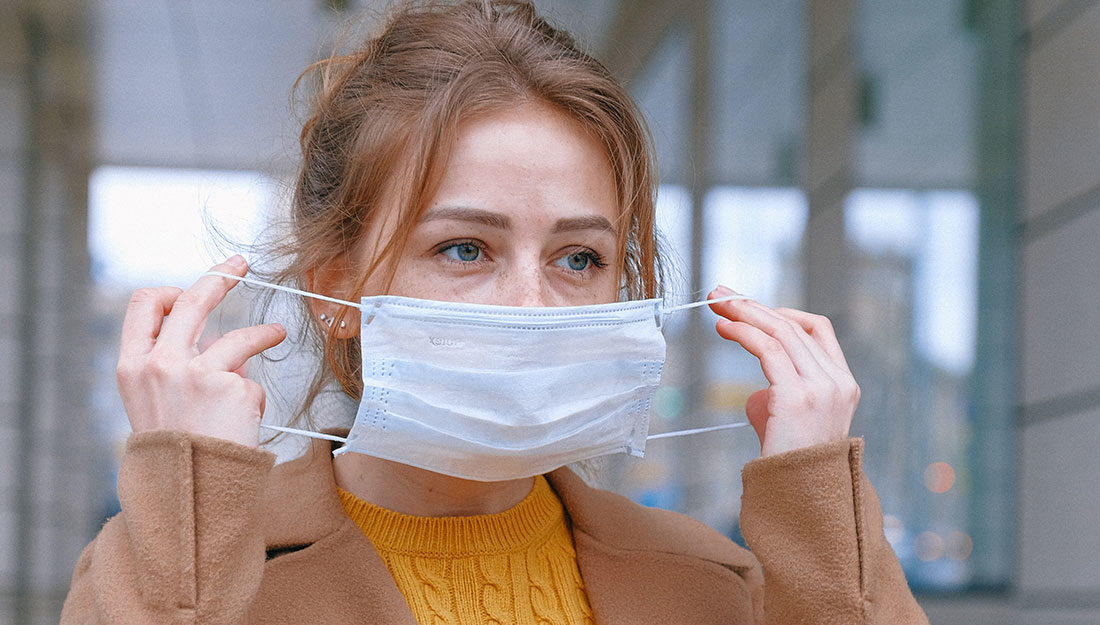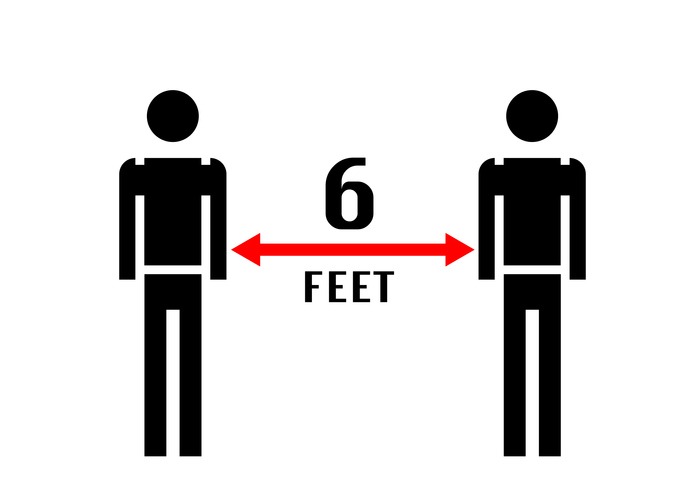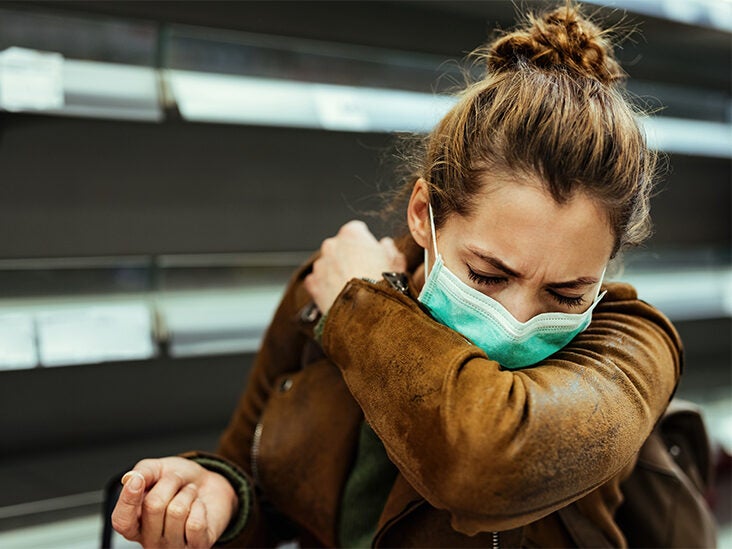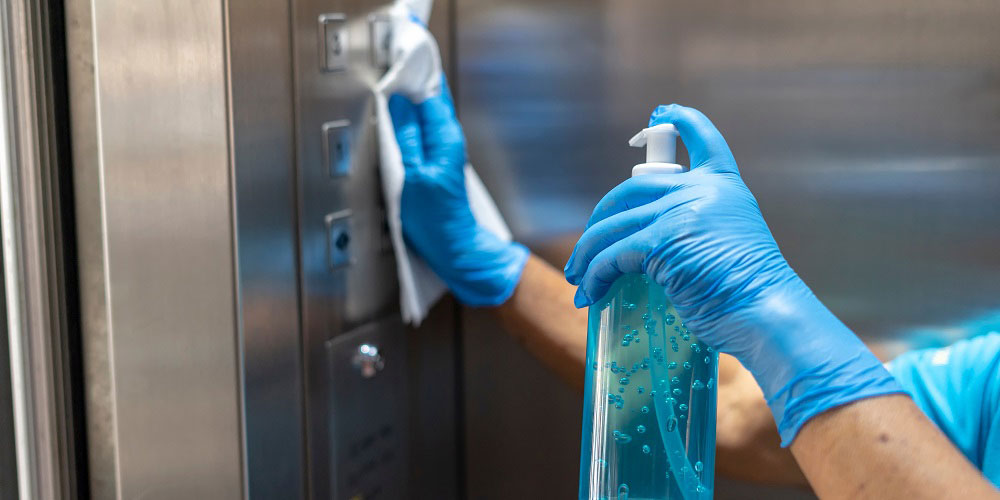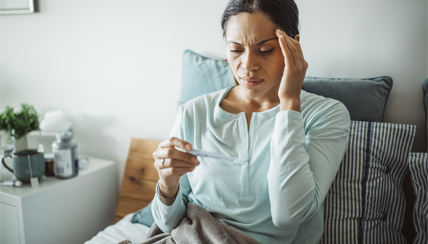

HOW TO PREVENT?
- Everyone 2 years and older should wear masks in public.
- Masks should be worn in addition to staying at least 6 feet apart, especially around people who don’t live with you.
- If someone in your household is infected, people in the household should take precautions including wearing masks to avoid spread to others.
- Wash your hands or use hand sanitizer before putting on your mask.
- Wear your mask over your nose and mouth and secure it under your chin.
- Fit the mask snugly against the sides of your face, slipping the loops over your ears or tying the strings behind your head.
- If you have to continually adjust your mask, it doesn’t fit properly, and you might need to find a different mask type or brand.
- Make sure you can breathe easily.
Stay 6 Feet Away From Others
- Inside your home:
- Avoid close contact with people who are sick.
- If possible, maintain 6 feel between the person who is sick and other household members.
- Outside your home:
- Put 6 feet of distance between yourself and people who don’t live in your household.
- Remember that some people without symptoms may be able to spread virus.
- Stay at least 6 feet (about 2 arm lengths) from other people.
- Keeping distance from others is especially important for people who are at higher risk of getting very sick.
- Authorized COVID-19 vaccines can help protect you from COVID-19.
- You should get a COVID-19 vaccine when it is available to you.
- Once you are fully vaccinated, you may be able to start doing some things that you had stopped doing because of the pandemic.
Avoid Crowds and Poorly Ventilated Spaces
- Being in crowds like in restaurants, bars, fitness centers, or movie theaters puts you at higher risk for COVID-19.
- Avoid indoor spaces that do not offer fresh air from the outdoors as much as possible.
- If indoors, bring in fresh air by opening windows and doors, if possible.
- Wash your hands often with soap and water for at least 20 seconds especially after you have been in a public place, or after blowing your nose, coughing, or sneezing.
- It’s especially important to wash:
- Before eating or preparing food
- Before touching your nose
- After using the restroom
- After leaving a public place
- After blowing your nose, coughing, or sneezing
- After handling your mask
- After changing a diaper
- After caring for someone sick
- After touching animals or pets
- If soap and water are not readily available, use a hand sanitizer that contains at least 60% alcohol. Cover all surfaces of your hands and rub them together until they feel dry.
- Avoid touching your eyes, nose, and mouth with unwashed hands.
- If you are wearing a mask:
- You can cough or sneeze into your mask. Put on a new, clean mask as soon as possible and wash your hands.
- If you are not wearing a mask:
- Always cover your mouth and nose with a tissue when you cough or sneeze, or use the inside of your elbow and do not spit.
- Throw used tissues in the trash.
- Immediately wash your hands with soap and water for at least 20 seconds. If soap and water are not readily available, clean your hands with a hand sanitizer that contains at least 60% alcohol.
- Clean high touch surfaces daily. This includes tables, doorknobs, light switches, countertops, handles, desks, phones, keyboards, toilets, faucets, and sinks.
- If someone is sick or has tested positive for COVID-19, disinfect frequently touched surfaces. Use a household disinfectant product from EPA’s List N: Disinfectants for Coronavirus (COVID-19)external icon according to manufacturer’s labeled directions.
- If surfaces are dirty, clean them using detergent or soap and water prior to disinfection.
Monitor Your Health Daily
- Be alert for symptoms. Watch for fever, cough, shortness of breath, or other symptoms of COVID-19.
- Especially important if you are running essential errands, going into the office or workplace, and in settings where it may be difficult to keep a physical distance of 6 feet.
- Take your temperature if symptoms develop.
- Don’t take your temperature within 30 minutes of exercising or after taking medications that could lower your temperature, like acetaminophen.
- Follow CDC guidance if symptoms develop.
